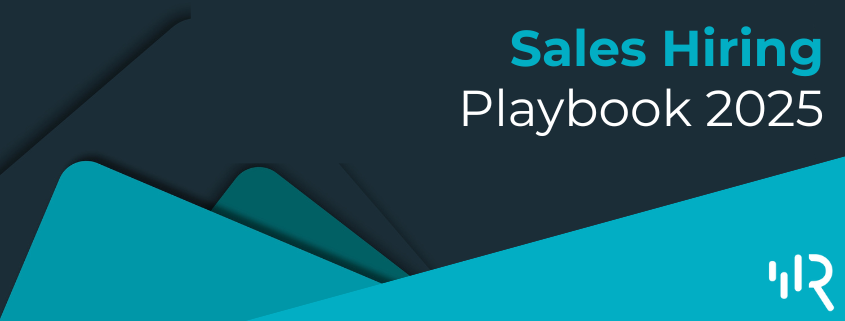2025 Sales Hiring Playbook
The game has changed. Discover how to stay ahead with the 2025 Sales Hiring Playbook.
Hiring elite sales talent in 2025 requires speed, clarity, and a magnetic employer story. The old rules—slow processes, vague offers, and generic job postings—no longer cut it. This 2025 Sales Hiring Playbook lays out the new rules sales hiring teams must follow to win top performers in a hyper-competitive market.
Rule 1: Every Job Post Is a Marketing Asset
Your job description is often the first impression—make it count.
Instead of task lists, lead with outcomes and growth potential. Today’s top sellers want to know how they’ll make an impact and what success looks like. Include compensation ranges, tools they’ll use, and a glimpse into career paths. Nearly 56% of companies now post compensation ranges to stay competitive and build trust with candidates (Morningstar, 2025).
Want it to resonate? Add real quotes from team members or clients to humanize your brand. This builds authenticity and can dramatically improve application rates.
Takeaway: The best candidates won’t apply unless the story feels compelling.
Rule 2: You Need a 2-Week Hiring Cycle
Time kills deals—and candidates.
In sales hiring, the longer your process, the more likely you are to lose top performers. The average time-to-hire for sales roles in the U.S. is 53 days, but that’s outdated thinking (Genius, 2025). A 2-week hiring cycle is the new benchmark.
Structure interview loops into 2-3 stages. Assign ownership of every step to remove bottlenecks. Use scheduling tools to automate where possible. High performers—especially the top 10%—are fielding multiple offers. If you don’t move fast, someone else will.
Takeaway: Speed beats perfection—especially when hiring A-players.
Rule 3: Compensation Clarity Wins Every Time
Don’t bury the comp.
Candidates want to know their earning potential up front. Being transparent about base vs. variable comp builds confidence. Top salespeople are data-driven—they need specifics, not vague promises.
Organizations that clearly communicate OTE (on-target earnings) attract more qualified applicants and close faster. Research shows that comp transparency is now a leading factor in offer acceptance (ISC Jobs, 2025).
Be prepared to benchmark offers and flex. Compensation flexibility often makes the difference between a yes and a no.
Takeaway: Vague offers signal vague leadership.
Rule 4: Manager Reputation Matters
In 2025, the hiring manager is under the spotlight.
Candidates will check LinkedIn, Glassdoor, and even ask backchannel contacts about you. What they find can make or break your ability to close top talent. In fact, 69% of job seekers say they won’t accept a role if the manager has a poor reputation (ElectroIQ, 2025).
Introduce yourself early with a video or written note. Share your coaching philosophy and how you help reps grow. Authenticity builds rapport—and trust.
Takeaway: You’re being interviewed, too.
Rule 5: Your Funnel Should Mirror Your Sales Process
Sales hiring should look like… well, sales.
Use tools like scorecards, pitch decks, and deal breakdowns to evaluate skills in real-world contexts. Align your interview process to the competencies that actually drive revenue—things like pipeline creation, closing ability, and resilience.
Debriefs should mirror pipeline reviews: structured, strategic, and focused on the “why” behind next steps. Companies that treat hiring like a revenue-generating process outperform their peers in quality and retention, especially when using ATS tools strategically (RecruiterFlow, 2025).
Takeaway: Treat hiring like sales—and run it like a pipeline.
Final Takeaways
- Job descriptions must sell, not just inform.
- A fast process keeps you in the game.
- Compensation clarity is non-negotiable.
- Managers are being scrutinized—show who you are.
- Structured, sales-driven hiring processes win.
Want to build a high-performance sales team in 2025? Learn about how you can scale your sales team with Rainmakers.

